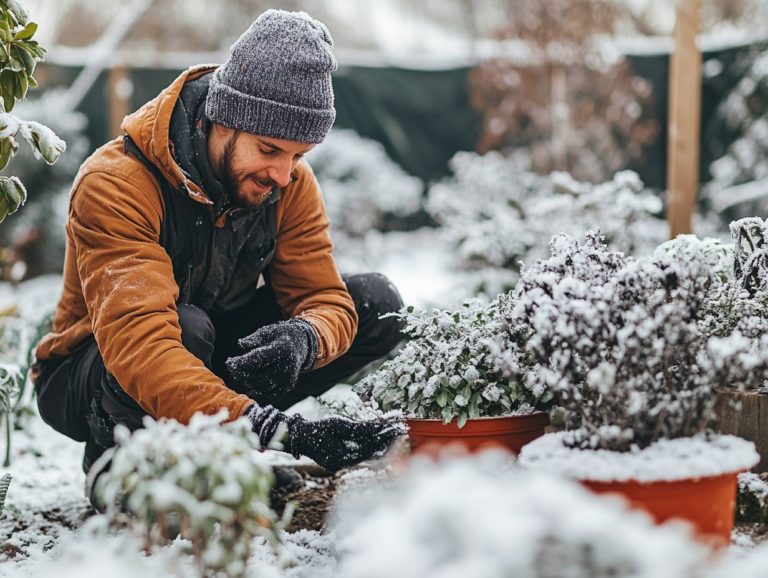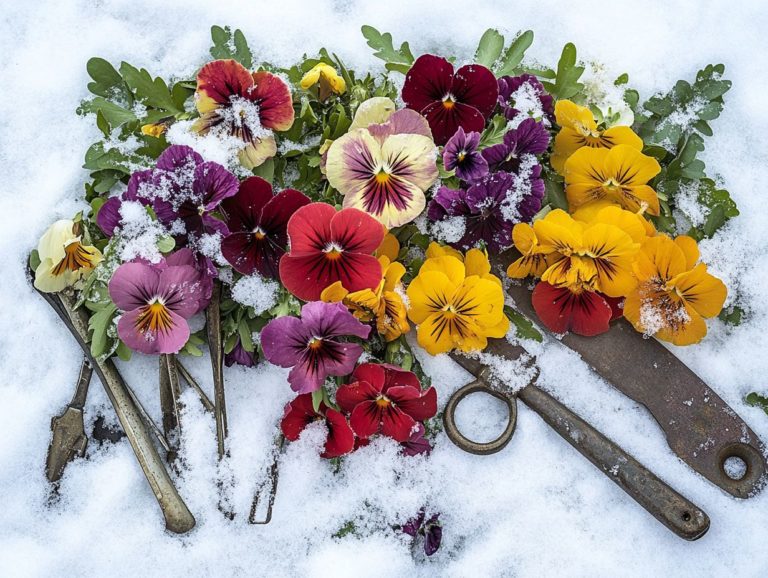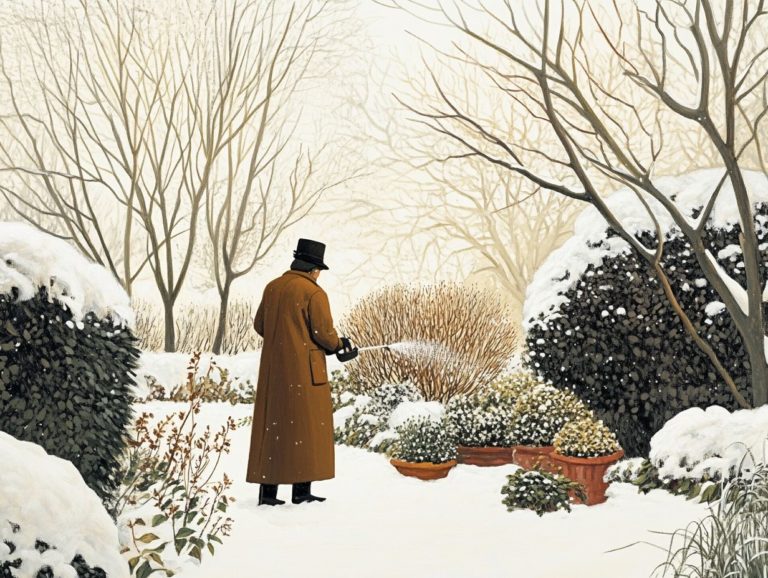How to Start a Cold-Climate Garden?
Gardening in cold climates presents a unique blend of challenges and rewards that can turn your outdoor space into a thriving haven, even as temperatures dip.
By selecting robust plants that endure frost and mastering winter preparation, you can cultivate a successful cold-climate garden. This guide equips you with essential knowledge to navigate this journey.
Explore best practices for planting and maintenance, tackle common obstacles like pest control, and uncover strategies to extend your growing season.
Get ready to embrace the captivating beauty of winter gardening!
Contents
- Key Takeaways:
- Understanding Cold-Climate Gardening
- Choosing Suitable Plants for a Cold-Climate Garden
- Preparing Your Garden for Cold Weather
- Planting and Maintaining Your Garden in Cold Weather
- Dealing with Common Challenges in Cold-Climate Gardening
- Tips for Extending the Growing Season
- Frequently Asked Questions
- What are the benefits of starting a cold-climate garden?
- What are the best plants to grow in a cold-climate garden?
- How should I prepare my garden for the cold weather?
- What are some tips for gardening in a cold climate?
- Can I still have a successful garden if I live in a cold climate?
- Are there any resources available to help me start a cold-climate garden?
Key Takeaways:
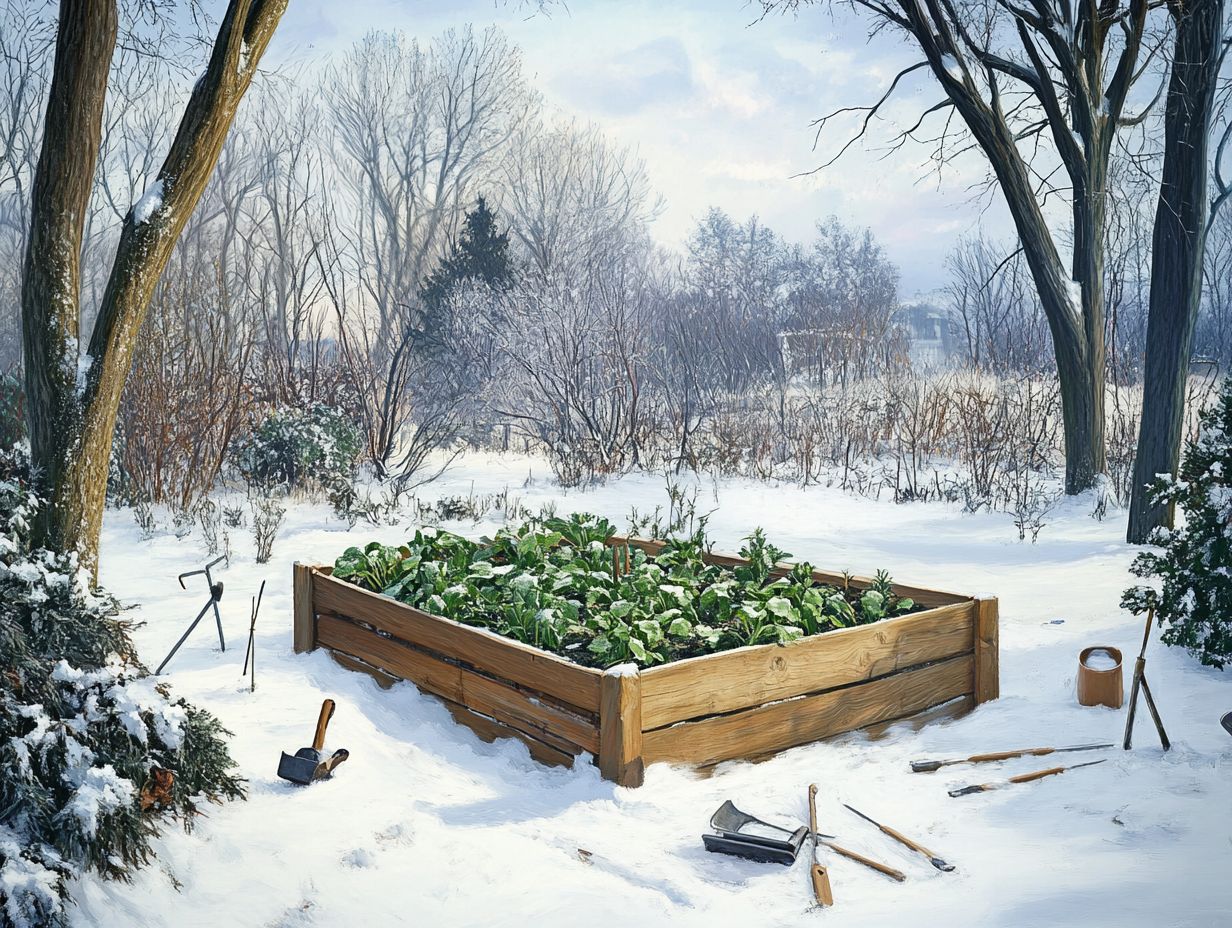
- Consider factors like temperature, soil, and sunlight when choosing plants for a cold-climate garden.
- Proper preparation and winterizing your garden is vital for success in cold weather.
- Use best practices, such as mulching and selecting hardy plants, to maintain your garden and extend the growing season.
Understanding Cold-Climate Gardening
Cold-climate gardening comes with unique challenges and opportunities, distinct from traditional gardening methods. Understanding hardiness zones and microclimates helps you choose the right plants to grow fresh produce, even in tough winter conditions. By exploring the benefits of cold-climate gardening, you can maximize your gardening success in these environments.
Take inspiration from Rick Stone at Our Stoney Acres in Utah; he shows how strategic planning can lead to a bountiful garden, regardless of the cold. By adapting various gardening techniques for winter, like using cold frames and row covers, you can cultivate a thriving garden filled with resilient plants like kale and spinach.
What Makes it Different?
Cold-climate gardening is a different ballgame compared to traditional gardening, thanks to temperature variations, seasonal constraints, and unique adaptations for success. To navigate these challenges, it’s helpful to know what resources are available for cold-climate gardeners.
If you re gardening in a colder region, pay close attention to hardiness zones. These zones reveal which plants can handle the lowest temperatures your local climate presents. This knowledge guides your plant choices, nudging you toward varieties with higher cold tolerance.
Your methods will differ significantly. Techniques like raised beds, mulch application, and row covers become essential allies in creating favorable growing conditions and protecting delicate plants from biting winds and frosts.
By customizing your approach, you can cultivate flourishing ecosystems, even amid the challenges the colder months present.
Choosing Suitable Plants for a Cold-Climate Garden
Selecting the right plants is crucial for a thriving cold-climate garden, where resilient varieties flourish. Understanding the key principles of cold-climate gardening ensures a fruitful growing season even amidst winter’s chill.
Factors to Consider
When picking plants for your cold-climate garden, consider several key factors: hardiness zones, soil conditions, and the timing of the seasons. Additionally, understanding how to use greenhouses for cold-climate gardening can greatly enhance your gardening success.
Understanding your specific hardiness zone is essential, as it dictates which plants will survive winter temperatures. The composition and drainage of your soil are equally important; you ll need to assess these carefully to provide the necessary nutrients and ensure proper moisture retention for thriving plants. If venturing into vegetable gardening in these brisk environments, choose varieties designed for cooler climates and plan your planting calendar with precision.
Utilizing raised beds can be transformative, enhancing soil warmth and drainage. This approach allows you to plant earlier in the spring and extends your growing season well into the winter months, giving you more opportunities to enjoy the fruits of your labor.
Preparing Your Garden for Cold Weather
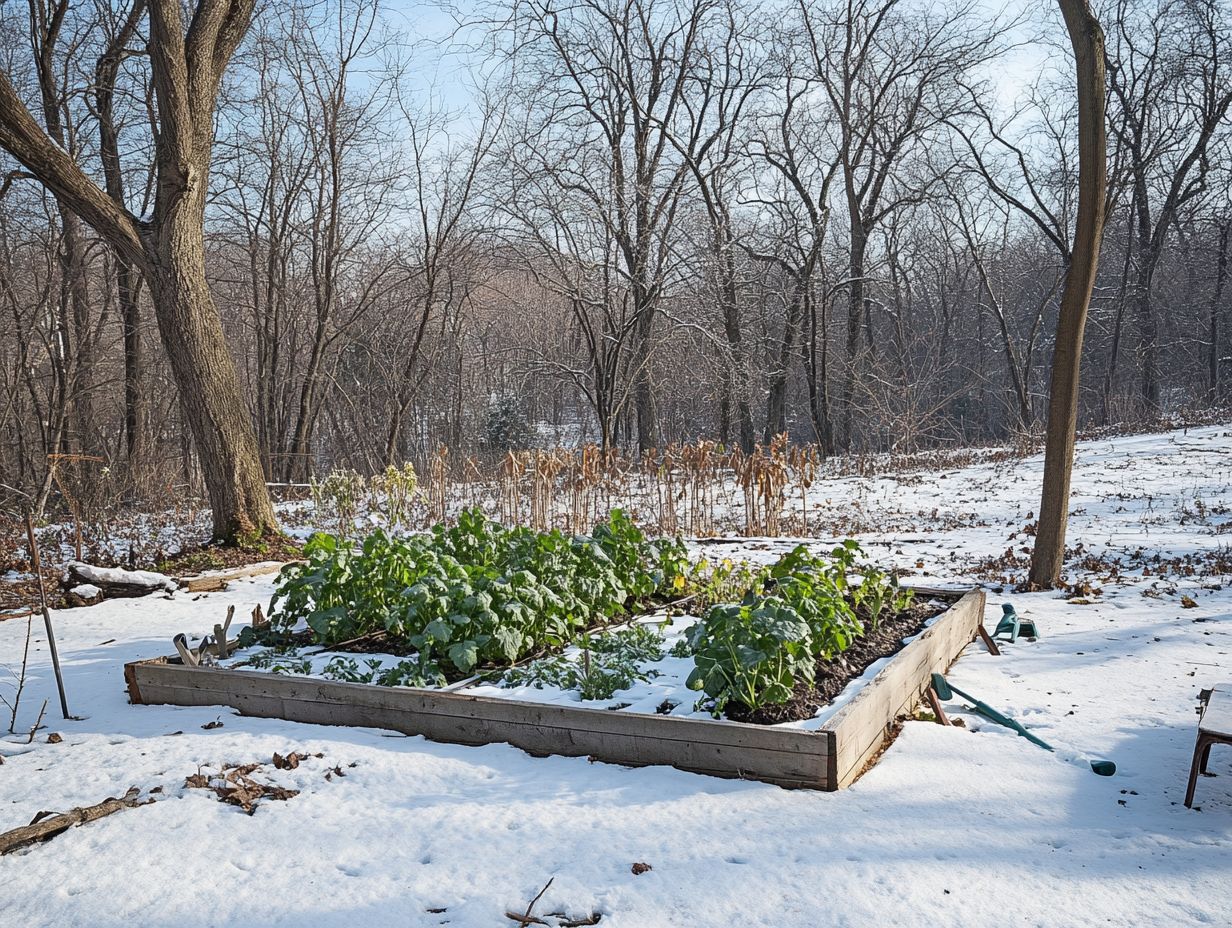
Preparation is essential for ensuring your garden can withstand the chill of winter. Focus on effective soil preparation and protective measures to winterize your garden successfully.
Key Steps for Winterizing
Key steps for winterizing your garden include insulating your plants and enhancing soil quality.
You should also utilize protective structures like cold frames and row covers. By taking these initiatives, you can ensure that your plants not only survive the harsh winter months but also remain healthy and robust come spring.
One effective strategy is to apply organic mulch, which is made from decomposed leaves or straw. This helps keep the soil moist while enriching it as it decomposes.
Incorporating cover crops can also work wonders. They prevent soil erosion and boost nutrient levels, laying the groundwork for a flourishing garden.
Emphasizing organic principles during this time is essential. It nurtures a self-sustaining ecosystem that fosters biodiversity and enhances overall plant vitality.
Planting and Maintaining Your Garden in Cold Weather
Successfully planting and maintaining your garden during cold weather demands a refined approach. This includes specific techniques like indoor gardening practices and effective season extension strategies.
By mastering these methods, you can ensure your garden thrives despite the chill.
Best Practices for Success
Employing best practices, such as strategic planting tips and proven gardening methods, can significantly elevate your cold-weather garden success.
With the right approach, you can harness the unique opportunities that cooler temperatures offer. Utilizing techniques like row covers and mulching will help you extend your growing season.
Choosing frost-resistant varieties is also beneficial. By fostering soil health through organic practices like composting and crop rotation, you can cultivate a more resilient garden ecosystem.
Combining these techniques enhances your chances of a bountiful harvest while promoting sustainable gardening practices that support overall plant vitality and minimize waste.
Dealing with Common Challenges in Cold-Climate Gardening
Cold-climate gardening is a thrilling challenge full of surprises! It brings its own set of distinctive challenges, especially regarding pest control and the need to adjust your gardening techniques. Understanding what is the best soil for cold-climate gardens can also make a significant difference in your success.
Pest Control and Other Issues
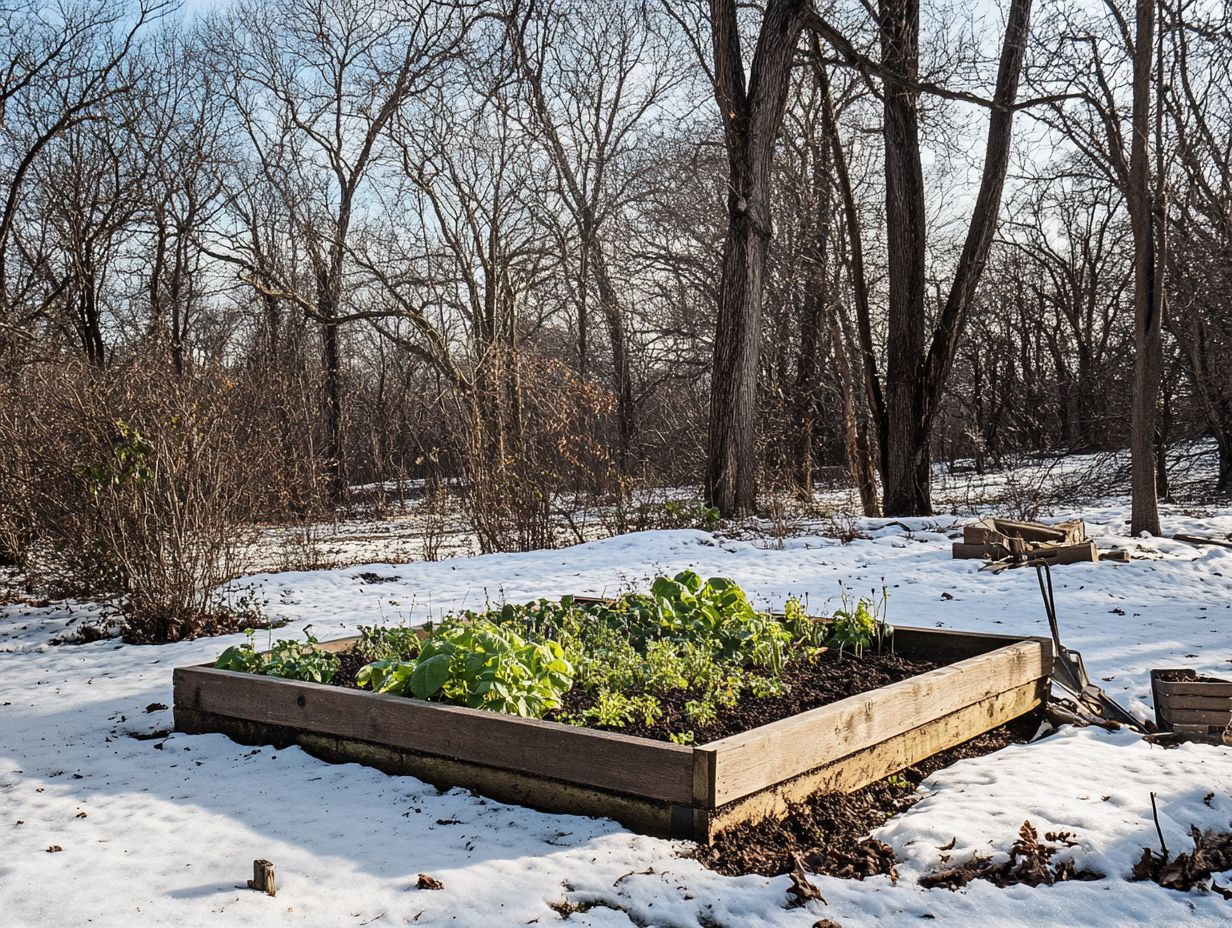
Managing pests and addressing challenges in cold-climate gardening requires a strategic approach and a thorough understanding of effective gardening methods.
As a gardener in these regions, you often encounter unique obstacles, from harsh weather conditions to specific pests thriving in cooler temperatures.
Emphasizing organic gardening techniques like companion planting and utilizing beneficial insects can significantly reduce pest populations without resorting to harmful chemicals.
Seasonal adaptations are vital. For instance, using protective covers during frosty nights can deter pests while safeguarding your plants’ health.
Choosing the right plant varieties that are resilient to cold can minimize pest invasions. This allows you to cultivate a thriving garden even in the heart of winter.
Tips for Extending the Growing Season
You can extend the growing season in colder climates through various effective methods. Consider employing high tunnels, cold frames, or exploring innovative indoor gardening practices.
Each of these techniques helps you cultivate your garden longer despite the chill in the air.
Maximizing Your Harvest
Maximize your harvest in a cold-climate garden by using smart planting tips. To enhance your gardening skills, check out the best cold-climate gardening books. Effective gardening methods are essential for success.
Understanding the unique challenges of cold-weather gardening helps you adopt practices that enhance crop resilience and productivity. For instance, cold frames, which are small structures that protect plants from cold weather, and cloches, covers that shield individual plants, can effectively extend your growing season and protect tender seedlings from frost.
Select hardy crops like kale, spinach, carrots, and turnips. These plants thrive in cooler temperatures and yield great results.
Align your planting schedule with the last frost date and apply mulch to help retain soil warmth. This supports healthy growth even in brisk conditions.
Frequently Asked Questions
What are the benefits of starting a cold-climate garden?
A cold-climate garden offers fresh produce and cuts grocery costs. Plus, it s a fun way to stay healthy!
What are the best plants to grow in a cold-climate garden?
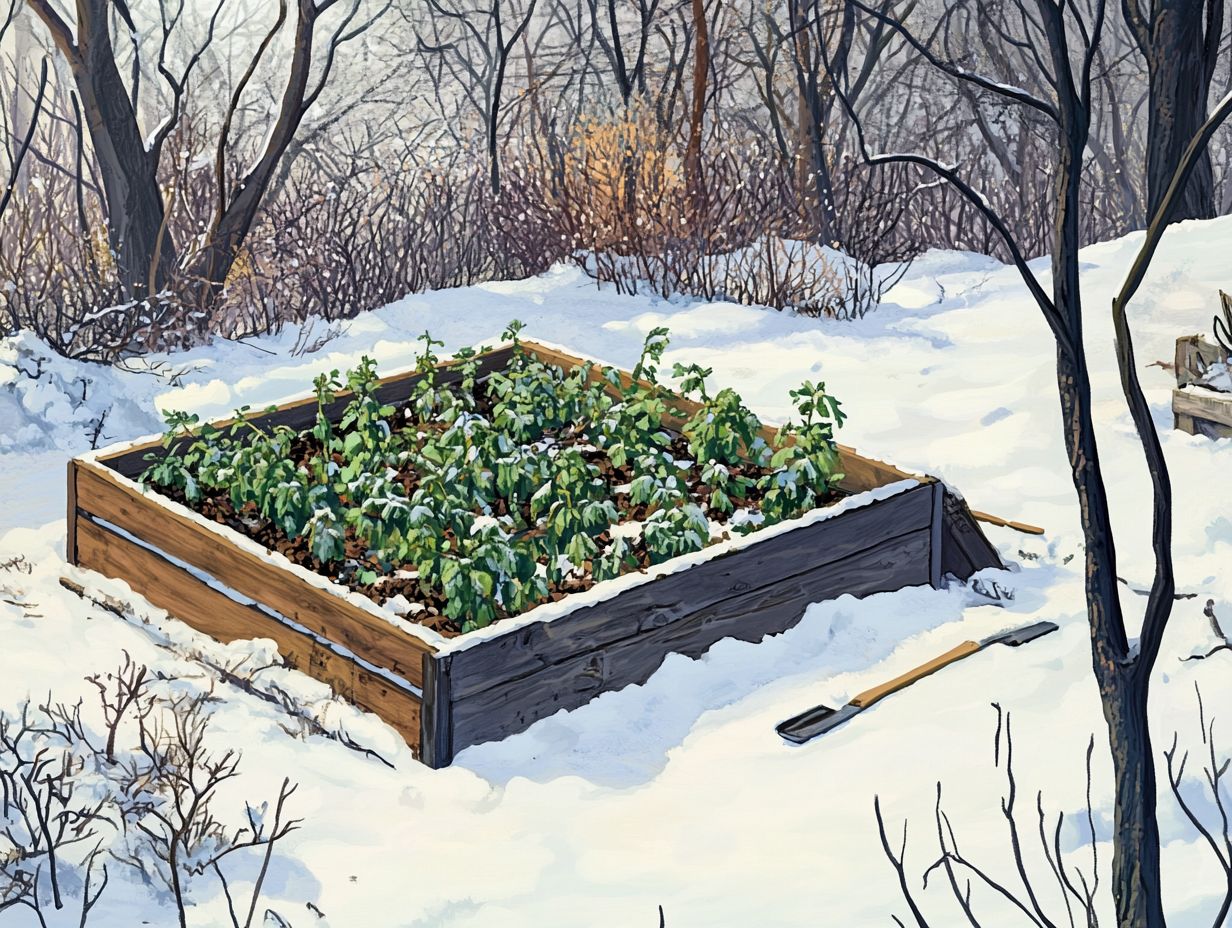
Some of the best plants include leafy greens, root vegetables, and cold-tolerant fruits like apples and berries. Choose plants that suit your specific climate and conditions.
How should I prepare my garden for the cold weather?
Before cold weather sets in, clean up your garden by removing dead plants and debris. Add a layer of mulch to protect the roots and consider using cold frames or row covers for extra insulation.
What are some tips for gardening in a cold climate?
Start seeds indoors, choose cold-tolerant varieties, and use season extenders like hoop houses or cloches. To understand the benefits, learn why choose cold-climate gardening. Stay alert to weather patterns to ensure your garden thrives!
Can I still have a successful garden if I live in a cold climate?
Absolutely! While gardening in a cold climate presents challenges, you can still have a thriving garden. With proper planning and techniques, enjoy a bountiful harvest even in colder regions.
Are there any resources available to help me start a cold-climate garden?
Yes! Many resources can guide you in starting a cold-climate garden. Consult local gardening groups or extension offices, read books or online articles, and attend workshops or classes to learn more.
Start planning your cold-climate garden today for a wonderful harvest tomorrow!

